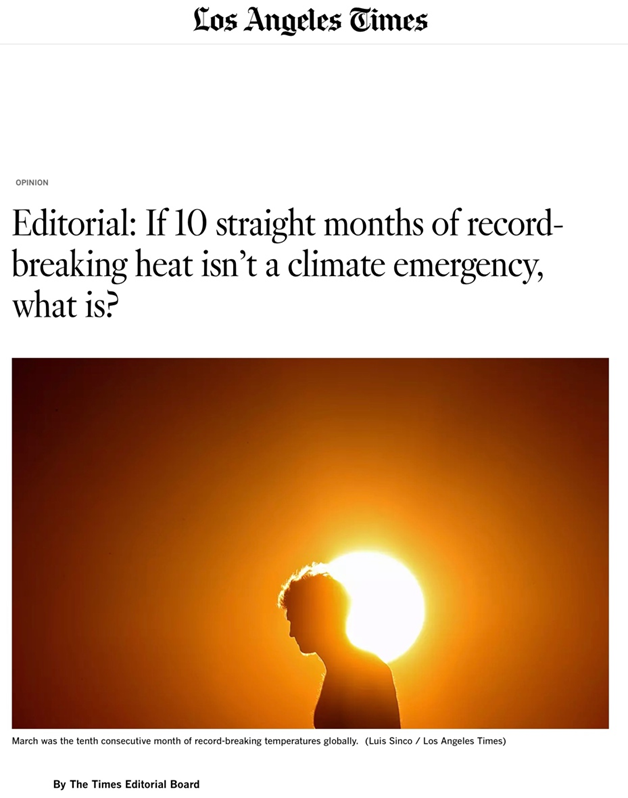By P Gosselin on 9. June 2018
Russian Arctic in 1920-1940 was warmer than today
By Dr. Sebastian Lüning and Prof. Fritz Vahrenholt
(German text translated/edited by P. Gosselin)
The topic today is the temperature trend in the Arctic. Of special interest are the hard facts. At Climate4You we find the satellite measured temperature development (UAH) of the Arctic:

Figure 1: Temperature chart of the Arctic over the past 40 years (satellite measurement). Data: UAH. Chart: Climate4You
Arctic temperatures today “similar” to 1980
We do see a warming over the past 4 decades. Since the El Nino-induced peak of 2016, the temperature has fallen gradually. The coldest temperatures were recorded at the end of the 1980s and early 1990s.
At around 1980 similar temperatures as those of today were measured. Unfortunately there is no satellite data for the time before 1979, and so not even a full 60-year ocean cycle is covered, and thus this makes it really difficult to assign warming to man or to natural causes over the recent decades.
Russian Arctic just as warm in the 1930s as today!
But of course there were weather stations before 1979, and these showed a warming phase in the Arctic already in the 1930s and 1940s, a time when it was just as warm as it is today. Example: Opel et al. 2009 reconstructed the temperature history in the Russian Arctic for the last 100 years using ice cores. The warm maximum occurred in the 1930s and not today:
115 year ice-core data from Akademii Nauk ice cap, Severnaya Zemlya: high-resolution record of Eurasian Arctic climate change
From 1999 to 2001 a 724 m deep ice core was drilled on Akademii Nauk ice cap, Severnaya Zemlya, to gain high-resolution proxy data from the central Russian Arctic. Despite strong summertime meltwater percolation, this ice core provides valuable information on the regional climate and environmental history. We present data of stable water isotopes, melt-layer content and major ions from the uppermost 57 m of this core, covering the period 1883–1998. Dating was achieved by counting seasonal isotopic cycles and using reference horizons. Multi-annual δ18O values reflect Eurasian sub-Arctic and Arctic surface air-temperature variations. We found strong correlations to instrumental temperature data from some stations (e.g. r = 0.62 for Vardø, northern Norway). The δ18O values show pronounced 20th-century temperature changes, with a strong rise about 1920 and the absolute temperature maximum in the 1930s. A recent decrease in the deuterium-excess time series indicates an increasing role of the Kara Sea as a regional moisture source. From the multi-annual ion variations we deduced decreasing sea-salt aerosol trends in the 20th century, as reflected by sodium and chloride, whereas sulphate and nitrate are strongly affected by anthropogenic pollution.”

Figure 2: Temperature chart Severnaya Zemlya (Russian Arctic) over the past 130 years. Upper peaks = warm. Source: Opel et al. 2009
A part of the warming by the way, has to do with measures that keep the air clean in Europe. The anthropogenic sulfate particle kept the Arctic cool for many years, so reports that University of Stockholm (via Science Daily). Should we get back to being dirty for reasons of climate change?
European clean air policies unmask Arctic warming by greenhouse gases
[…] The drastic cut in sulfate particle emissions in Europe partly explains the amplified Arctic warming since the 1980s, shows a new study published in Nature Geoscience. The team, which consists of scientists from Stockholm University and the Norwegian Meteorological Institute, say that their surprising finding highlights an even more urgent need for reducing greenhouse gas emissions to mitigate Arctic climate change. Human activities, such as industrial production, transport, power generation, and wood burning emit large amounts of tiny pollutant particles containing, for example, soot and sulfate, into the atmosphere. High airborne amounts of these particles, also known as aerosol particles, cause about 400,000 premature deaths every year in Europe and can be transported over long distances. Aerosol particles have different sizes, as well as chemical and physical properties, all of which determine their climate effects.
“Soot particles absorb solar radiation and warm the climate, in a similar way as greenhouse gases, such as carbon dioxide, do. Sulfate particles, on the other hand, reflect solar radiation and act as seeds for cloud droplet formation, cooling the climate as a result,” says Juan Acosta Navarro, PhD student at the Department of Environmental Science and Analytical Chemistry (ACES) and the Bolin Center for Climate Research, Stockholm University, and co-author of the study. He continues: “The overall effect of aerosol particles of human origin on climate has been a cooling one during the last century, which has partially masked the warming caused by the increase in greenhouse gas emissions.” […]
J. C. Acosta Navarro, V. Varma, I. Riipinen, Ø. Seland, A. Kirkevåg, H. Struthers, T. Iversen, H.-C. Hansson, A. M. L. Ekman. Amplification of Arctic warming by past air pollution reductions in Europe. Nature Geoscience, 2016; DOI: 10.1038/ngeo2673“
But also later alterations to the measurement data make the Arctic look warmer today than it actually is (see here and here). A nice summary of climate change in the Arctic can be found at Judith Curry’s site.






